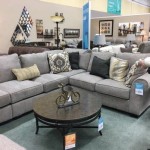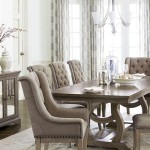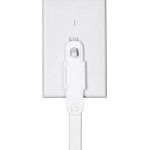Patio Furniture Designed for Larger Individuals: Considerations for Comfort and Durability
Outdoor living spaces offer respite and opportunities for relaxation. However, individuals of larger stature frequently encounter challenges in finding patio furniture that provides adequate support, comfort, and long-term durability. Standard patio furniture often has weight restrictions, uncomfortable dimensions, and construction that proves flimsy over time. Therefore, specialized consideration is required when selecting patio furniture intended for use by bigger individuals. This article addresses key factors in selecting patio furniture designed to accommodate larger body types, focusing on material selection, construction techniques, and ergonomic design principles.
Weight Capacity and Structural Integrity
A primary concern when purchasing patio furniture for larger individuals is the weight capacity of each piece. Manufacturers typically specify a maximum weight limit for chairs, sofas, and tables. Exceeding this limit can compromise the furniture's structural integrity, leading to premature wear, breakage, and potential injury. Therefore, it’s crucial to verify the weight capacity before making a purchase. Seek out furniture with reinforced frames and robust construction to ensure long-term stability.
Materials play a significant role in determining weight capacity. Aluminum, steel, and hardwood are common choices for patio furniture frames. Steel and hardwood generally offer greater load-bearing capabilities compared to aluminum. When selecting aluminum furniture, pay attention to the gauge (thickness) of the aluminum. Thicker gauge aluminum provides greater strength and durability. Look for furniture that explicitly states it is designed for heavy-duty use or specifically caters to larger individuals. Many manufacturers now offer lines of furniture with significantly higher weight ratings compared to standard offerings.
Construction methods also contribute to overall strength. Welded joints are generally stronger than bolted joints. Examine the welding quality; look for clean, consistent welds with no visible gaps or imperfections. Poor welding can indicate a higher risk of failure under stress. For wooden furniture, ensure that the wood is properly seasoned and joined using sturdy mortise-and-tenon or dowel joinery techniques. Avoid furniture that relies solely on screws or staples for assembly, as these fasteners can loosen or fail over time, particularly under heavier loads.
Consider the base and leg design of the furniture. Wide bases and sturdy legs provide greater stability and evenly distribute weight. Avoid furniture with flimsy or spindly legs, as they are more prone to tipping or breaking under pressure. Look for furniture with levelers on the legs to ensure stability on uneven surfaces. Levelers allow you to adjust the height of each leg individually to compensate for slight variations in the patio surface, further enhancing stability and preventing rocking or wobbling.
Ergonomic Design and Comfort Considerations
Beyond weight capacity, comfort is paramount. Patio furniture for larger individuals should be designed with ergonomic principles in mind to ensure proper support and ease of use. Seat width, seat depth, back height, and armrest placement are all critical factors that contribute to overall comfort.
Adequate seat width is essential for providing ample space and preventing a feeling of being confined. Standard patio chairs often have narrow seats that can be uncomfortable for larger individuals. Look for chairs with seat widths of at least 22 inches, and preferably wider, depending on individual needs. Seat depth should also be sufficient to provide adequate thigh support. A seat depth that is too shallow can lead to pressure points and discomfort, while a seat depth that is too deep can make it difficult to get in and out of the chair. An ideal seat depth generally falls between 20 and 24 inches.
Back height is another important consideration. A high back provides greater support for the upper back and shoulders, while a lower back may be more comfortable for some individuals. Consider the intended use of the furniture when selecting back height. If the furniture is primarily intended for relaxing and lounging, a high back is generally preferable. If the furniture is primarily intended for dining or socializing, a lower back may be more appropriate to allow for greater freedom of movement.
Armrests should be positioned at a comfortable height and width to provide support for the arms and shoulders. Armrests that are too low can cause the shoulders to slump, while armrests that are too high can cause the shoulders to tense up. Ensure that the armrests are wide enough to accommodate the full width of the arms. Padded armrests can further enhance comfort. Some furniture designs incorporate adjustable armrests, allowing users to customize the height and width to their individual preferences.
Cushioning also plays a vital role in comfort. Look for cushions made from high-density foam that provides ample support and resists compression over time. Avoid cushions that are thin or overly soft, as they are likely to flatten out quickly and provide minimal support. Consider using cushions with removable and washable covers for easy maintenance. Fabric selection is also important. Outdoor fabrics should be durable, weather-resistant, and fade-resistant to withstand the elements. Solution-dyed acrylic fabrics are a popular choice for outdoor cushions due to their excellent durability and fade resistance.
Material Selection for Longevity and Maintenance
The choice of materials significantly impacts the longevity and maintenance requirements of patio furniture. Selecting durable and weather-resistant materials is crucial for ensuring that the furniture withstands the elements and maintains its appearance over time. Common materials used in patio furniture include aluminum, steel, wood (teak, cedar, acacia), and resin wicker.
Aluminum is a popular choice due to its lightweight nature, rust resistance, and relatively low maintenance requirements. Powder-coated aluminum is particularly durable and resistant to scratches and chipping. However, aluminum can be susceptible to dents and bending under heavy loads if it is not properly reinforced. Opt for thicker gauge aluminum and reinforced frames for added strength. Aluminum furniture is easily cleaned with soap and water.
Steel is another durable option, particularly when powder-coated to prevent rust. Steel is heavier than aluminum, providing greater stability and resistance to tipping. However, steel furniture can become hot to the touch in direct sunlight. Consider using cushions to mitigate this issue. Steel furniture is generally easy to clean with soap and water.
Wood, particularly teak, is a classic choice for patio furniture. Teak is naturally resistant to rot, decay, and insects due to its high oil content. However, teak requires regular maintenance to preserve its appearance. Untreated teak will gradually weather to a silver-gray color. If you prefer to maintain the original warm brown color of teak, it must be oiled regularly with a teak oil preservative. Other wood options include cedar and acacia, which are less expensive than teak but also less durable. Cedar and acacia require regular sealing to protect them from the elements.
Resin wicker is a synthetic material that mimics the look of natural wicker but is more durable and weather-resistant. Resin wicker is typically made from polyethylene or polypropylene and is resistant to fading, cracking, and peeling. Resin wicker furniture is lightweight and easy to clean with soap and water. Look for high-quality resin wicker that is woven tightly and evenly to ensure long-term durability.
Beyond the frame material, consider the materials used for tabletops and other surfaces. Tempered glass is a popular choice for tabletops due to its strength and durability. However, tempered glass can be heavy and can shatter if struck with sufficient force. Stone tabletops, such as granite or marble, are extremely durable and weather-resistant but can also be very heavy. Plastic or resin tabletops are lightweight and easy to clean but may not be as durable as other options.
Ultimately, selecting patio furniture for larger individuals requires careful consideration of weight capacity, ergonomic design, and material selection. Prioritizing these factors ensures that the furniture provides adequate support, comfort, and long-term durability, allowing for enjoyable and relaxing outdoor experiences.

Plus Size Friendly Patio Furniture The Life

Big Man Outdoor Chairs For People And Tall

Big Man Outdoor Chairs For People And Tall

Patio Chairs Big People

Big Man Outdoor Chairs For People And Tall

Patio Chairs Big People

6 Piece Patio Sectional Big Joe Outdoor Furniture

73 Outdoor Seating Ideas And Designs For Backyards Rooftops Architectural Digest

Costway Outdoor Patio Rattan Daybed Pillows Cushioned Sofa Furniture Biege Turquoise Red 1 Unit Fry S Food Stores

Patio Outdoor Garden Furniture Rattan Strong Big Swing Chair For Two People Made In Com








